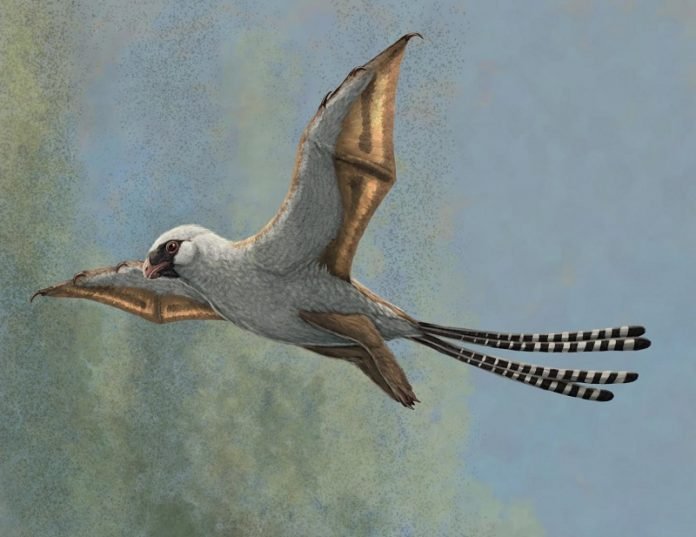
Despite having bat-like wings, two small dinosaurs, Yi and Ambopteryx, struggled to fly, only managing to glide clumsily between the trees where they lived, researchers report in the journal iScience.
Unable to compete with other tree-dwelling dinosaurs and early birds, they went extinct after just a few million years.
The findings support that dinosaurs evolved flight in several different ways before modern birds evolved.
“Once birds got into the air, these two species were so poorly capable of being in the air that they just got squeezed out,” says first author Thomas Dececchi, Assistant Professor of Biology at Mount Marty University.
“Maybe you can survive a few million years underperforming, but you have predators from the top, competition from the bottom, and even some small mammals adding into that, squeezing them out until they disappeared.”
Yi and Ambopteryx were small animals from Late Jurassic China, living about 160 million years ago.
Weighing in at less than two pounds, they are unusual examples of theropod dinosaurs, the group that gave rise to birds.
Most theropods were ground-loving carnivores, but Yi and Ambopteryx were at home in the trees and lived on a diet of insects, seeds, and other plants.
Curious about how these animals fly, Dececchi and his collaborators scanned fossils using laser-stimulated fluorescence (LSF), a technique that uses laser light to pick up soft-tissue details that can’t be seen with standard white light.
Later, the team used mathematical models to predict how they might have flown, testing many different variables like weight, wingspan, and muscle placement.
“They really can’t do powered flight. You have to give them extremely generous assumptions in how they can flap their wings.
You basically have to model them as the biggest bat, make them the lightest weight, make them flap as fast as a really fast bird, and give them muscles higher than they were likely to have had to cross that threshold,” says Dececchi. “They could glide, but even their gliding wasn’t great.”
While gliding is not an efficient form of flight, since it can only be done if the animal has already climbed to a high point, it did help Yi and Ambopteryx stay out of danger while they were still alive.
“If an animal needs to travel long distances for whatever reason, gliding costs a bit more energy at the start, but it’s faster. It can also be used as an escape hatch. It’s not a great thing to do, but sometimes it’s a choice between losing a bit of energy and being eaten,” says Dececchi.
“Once they were put under pressure, they just lost their space. They couldn’t win on the ground. They couldn’t win in the air. They were done.”
The researchers are now looking at the muscles that powered Yi and Ambopteryx to construct an accurate image of these bizarre little creatures. “I’m used to working with the earliest birds, and we sort of have an idea of what they looked like already,” Dececchi says.
“To work where we’re just trying to figure out the possibilities for a weird creature is kind of fun.”



